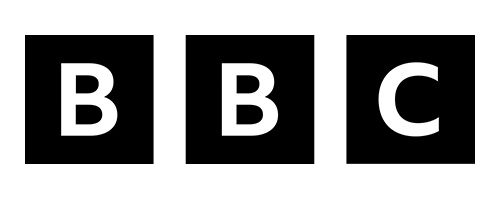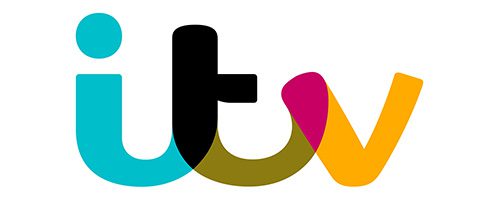Poor lighting in the workplace may seem like a minor issue to some. However, it could be the root of an employee’s pain. For example, low or insufficient light could cause an accident if an employee is unable to see where they are going.
This guide discusses an employer’s legal responsibility to ensure workplace safety and how someone could go about claiming compensation for an accident caused by bad lighting.
We also review important steps in the claims process, including evidence you can gather and what your compensation could cover should your workplace accident claim be successful.
Finally, we outline the reasons why many people work with our No Win No Fee expert solicitors. On top of this, we provide dedicated support and case assessments through three contact channels, all of which are free to use:
- Phone: 0800 073 8804.
- Website: Contact us online.
- Live chat: Just open the small tab below.
Jump To A Section
- Can I Claim If Injured By Poor Lighting In The Workplace?
- How Should My Employer Assess Lighting In The Workplace?
- How Could Poor Lighting In The Workplace Lead To A Claim?
- What Should I Do If Injured By Inadequate Lighting?
- How Much Compensation For A Poor Lighting Accident Claim?
- Make A Poor Lighting Accident Claim Using A No Win No Fee Solicitor
- More Resources Related To Accident At Work Claims
Can I Claim If Injured By Poor Lighting In The Workplace?
Firstly, it is worth explaining when you could claim for the effects of poor lighting in the workplace leading to an accident.
Under Section 2 of the Health and Safety at Work etc. Act 1974, employers must take all reasonable and practicable steps that maintain employee safety and overall well being. Ensuring access to adequate lighting, whether it is natural light or artificial lighting, could be considered one reasonable step an employer should take.
You can make an accident at work claim if you can prove that:
- Your employer owed you a duty of care in the time and place of the incident, as laid out by HASAWA.
- They breached this duty. For example, they may have failed to repair flickering lights despite having the issue reported to them.
- This breach of duty led to an accident where you suffered physical and/or psychological harm.
If you’re unsure whether you can seek compensation for workplace injuries caused by a lighting problem, just call the number at the top of your page for a free case assessment.
How Should My Employer Assess Lighting In The Workplace?
In order to uphold their duty of care, employers can follow advice provided by the Health and Safety Executive (HSE). As Great Britain’s workplace health and safety regulator, the HSE offers guidance on lighting and other elements needed to keep workers safe.
Among the steps employers can take to ensure proper lighting are ensuring they:
- Identify and account for any possible health hazard, such as uneven lighting, incorrect lighting design or effects like glare.
- Conduct regular maintenance to make sure light fixtures work and provide good lighting.
- Fit blinds or rearrange the workplace to prevent vision problems caused by too much light from outside.
- Correct insufficient light or poorly distributed light by adding more lamps or more light fixtures.
- Add matt paint to glossy surfaces so they do not reflect too much light.
Under the Management of Health and Safety at Work Regulations 1999, employers are required by law to make sufficient assessments, which includes checking that workplace lighting is suitable.
All of these steps could be considered reasonable, and in most cases they will be practicable. Therefore, if an employer’s failure to act on lighting issues allows an accident to happen where you are injured at work, you might be able to claim compensation.
Discuss your experience over the phone with an advisor today to learn if you have the right to make a personal injury compensation claim.
How Could Poor Lighting In The Workplace Lead To A Claim?
Poor lighting in the workplace leads to reduced visibility, which in turn could cause someone to fall and suffer harm. Here are some examples of how an employer could be liable for such accidents:
- New desk lamps are installed in an area where cutting equipment is used. The illumination levels are not checked and the lights are much too bright. One employee is temporarily blinded and traumatically amputates part of a finger when a colleague turns on a lamp.
- Because of poor lighting conditions on a stairwell, an employee trips and falls on the top step. They suffer a badly fractured bone in their arm as a result of falling down the stairs and putting their arm out to break their fall.
- A supermarket employee in a dimly lit aisle collides with a shelf, which causes a heavy box to fall on them. They experience a serious injury to their head and also suffer severe shoulder pain.
These examples above might be similar or even identical to your experience of a workplace accident. The best way of checking whether you can sue the workplace for your injuries is by calling the number at the top of this page and asking for a consultation.
What Should I Do If Injured By Inadequate Lighting?
If you’ve suffered an injury at work and have noted that poor lighting conditions contributed to the accident, there are a few steps you could take to help a potential claim.
- Firstly, seek any first aid or medical attention you need. Not only is this important for your physical and mental health, but a copy of your health records could be submitted as evidence of the harm you suffered.
- Make sure the staff member responsible for logging accidents has made a record in the accident book your employer should keep. A copy of the entry could be added to your evidence.
- Collect any photos that show the accident scene, especially if they highlight a lighting problem. In some cases you might also be able to get CCTV footage of the incident.
- Ask any witnesses to share their contact details.
- Keep your receipts. Having them and any other documents like payslips or invoices will be important if injuries have caused financial damage. We explain why this is important in the next section.
- Seek the support of a trusted solicitor. This is ultimately your choice, but our No Win No Fee solicitors have a proven track record of helping people mount successful accident at work claims.
If you want the help of an expert to guide you through the personal injury claim process, call today to learn whether one of our solicitors can take on your case.
How Much Compensation For A Poor Lighting Accident Claim?
You may be wondering how much compensation you could be awarded for a successful poor lighting in the workplace claim.
A payout can be split into up to two parts, known as heads of loss. These are:
- General damages, which compensate for physical pain and negative impact on mental well being that injuries cause.
- Special damages, forming a second potential head of claim accounting for financial loss inflicted because of injuries. This can include a loss of earnings from missing work, medical bills or travel costs, among other things.
Those working out the general damages element can look at a guide to compensation brackets for different injuries. This can be found in the Judicial College Guidelines (JCG), a document we’ve used to create the illustrative table you see below.
Compensation Table
This table consists of figures found in the JCG. It can be used as an alternative to a compensation calculator, but it is still only a guide. Please note that the top line is not from the JCG.
| INJURY | SEVERITY | AMOUNT |
|---|---|---|
| Multiple Serious Injuries And Related Monetary Losses | Severe | Up to £500,000+ |
| Brain/Head | Moderately Severe | £267,340 to £344,150 |
| Brain/Head | Less Severe | £18,700 to £52,550 |
| Arm | Severe | £117,360 to £159,770 |
| Arm | Simple Fractures of the Forearm | £8,060 to £23,430 |
| Back | Severe (ii) | £90,510 to £107,910 |
| Shoulder | Serious | £15,580 to £23,430 |
| Hand | Total and Partial Loss of Index Finger | £14,850 to £22,870 |
| Injuries Affecting Sight | Minor Eye Injuries | £4,820 to £10,660 |
Make A Poor Lighting Accident Claim Using A No Win No Fee Solicitor
Our solicitors are trained experts with years of experience in helping people get fair compensation for an accident caused by insufficient lighting. They offer their service under a Conditional Fee Agreement, in which you:
- Do not pay an upfront or running charge for their work.
- Have no solicitor fee to pay if the case fails.
- Only pay a small percentage of your compensation payout to the solicitor as their success fee if the claim wins.
Because The Conditional Fee Agreements Order 2013 applies a clear legal cap, you can be assured that you will take the majority of your payout.
Contact Us 24/7 For Free To See If You Can Claim Accident At Work Compensation
At this point, you may be interested in starting a claim on a No Win No Fee basis. Whether you just have questions or want to know if you can seek compensation, we’re available for free and effective information. Also, you could be connected to a solicitor right away if you have a valid claim.
Reach us at any time of day by:
- Calling 0800 073 8804.
- Using our ‘Contact us’ online form.
- Sending a message through our live chat tab.
More Resources Related To Accident At Work Claims
Here are some further related guides:
- Have you been injured after a trip over the carpet at work? Learn how a solicitor could help you claim.
- A look at who pays your medical bills if you are injured at work.
- When you can claim for an accident caused by inadequate training at work.
Also try these useful resources:
- GOV.UK – Statutory Sick Pay guidance.
- NHS – First aid information.
- HSE – Workplace health and safety statistics.
Thank you for reading this guide. If poor lighting in the workplace has contributed to a workplace accident you were injured in, please call any time to learn how we can help.










